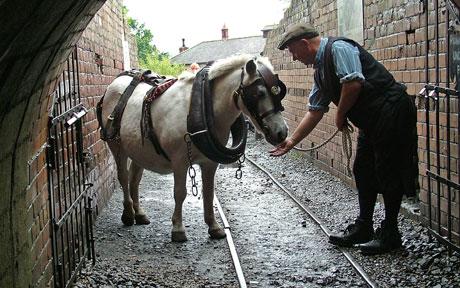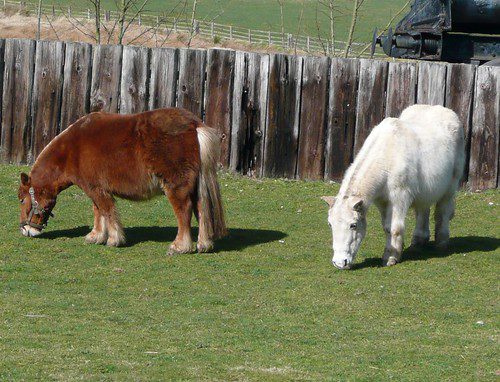This image freaks me out, as well it should.

from Wikipedia:
Ponies began to be used underground, often replacing child or female labour, as distances from pithead to coal face became greater. The first known recorded use in Britain was in the Durham coalfield in 1750. In later years, mechanical haulage was introduced on the main underground roads replacing the longer pony hauls (“driving”) and ponies tended to be confined to the shorter runs from coal face to main road (known in North East England as “putting”) which were more difficult to mechanise. As of 1984, 55 ponies were still at use with the National Coal Board in Britain, chiefly at the modern pit in Ellington, Northumberland. At the peak in 1913, there were 70,000 ponies underground in Britain.

From several of my superficial trawls, it is said that the ponies were well-looked after (better than the men), as they were a more difficult to replace capital commodity. In some cases, the stables even had electric lights, and they were given treats from the miner’s lunches, to coerce them to work harder. But in many cases, the ponies would remain underground for as long as a year.
The last surviving pit pony, Pip, died in February 2009 at the age of 35.

He worked at Blackburn Drift, Marley Hill Colliery, near Sunniside, Gateshead, and then at Sacriston Colliery, near Durham, and retired in 1985 when the mine closed. he spent his last 23 years at Beamish (open air museum). I bet he felt pretty happy and surprised about that turn of event. Telegraph, February 2009
